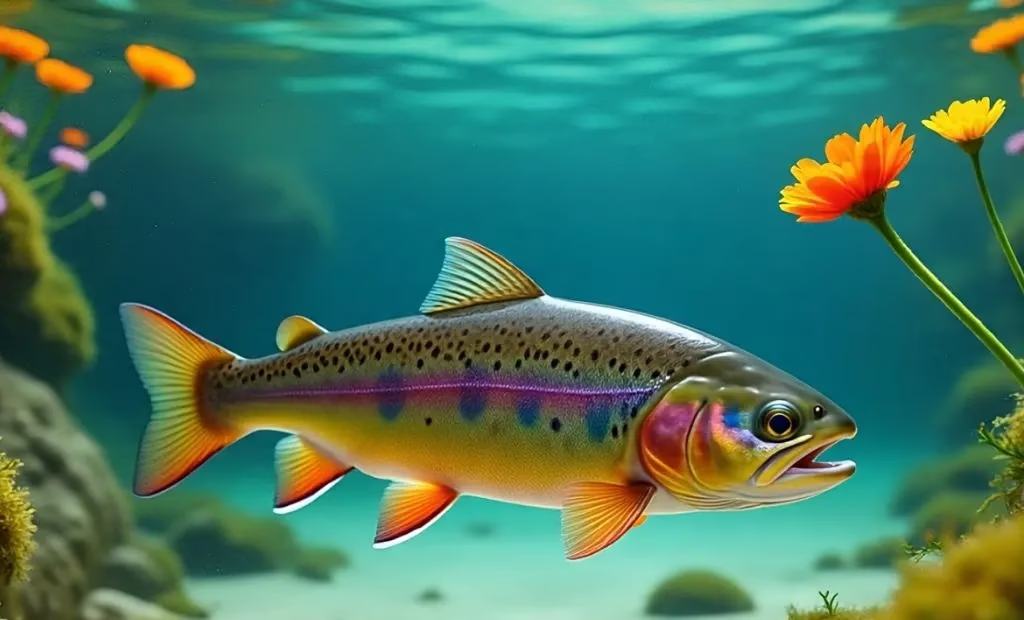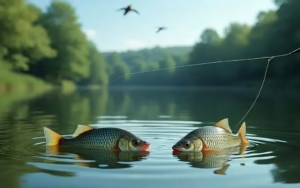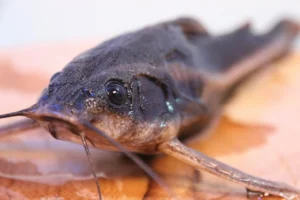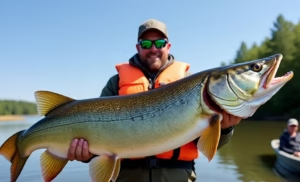An overview of rainbow trout
The rainbow trout is one of the most popular and well-known species of rainbow trout fish. This fish’s brilliant coloring and adaptability make it a favorite among biologists, anglers, and environment enthusiasts. Introduced to waters worldwide, rainbow trout are the most prevalent trout species, with the exception of Antarctica.
This species’ remarkable versatility allows it to live in both human-run hatcheries and natural waterways. It has also given rise to a number of species, including the steelhead trout, which lives in saltwater for a portion of its existence. Because of their immense diversity, rainbow trout serve as a symbol of the resilience of freshwater ecosystems.
The History of Rainbow Trout
Rainbow trout (Oncorhynchus mykiss) are members of the Salmonidae family, which also includes salmon, char, and whitefish. Within the family, there are three main genera:
Oncorhynchus: Pacific trout and salmon species
Salmo: Atlantic-sourced salmon and trout, including brown trout
Salvelinus: Arctic species, including lake trout
Rainbow trout belong to the genus Oncorhynchus, which originated in the Pacific Ocean. Subspecies include the redband trout of the Columbia River, the golden trout, the coastal rainbow trout, and even rarer types such as the Baja California rainbow trout.
The Greek word oncorhynchus means “hook snout,” and the Kamchatkan name for trout is mykiss. when shifting between genera and being initially formally reported in the late 1700s, the fish was finally classified as belonging to Oncorhynchus in 1989 when genetic studies revealed that it originated in the Pacific.
Common Nicknames
Rainbow trout are known by many names depending on where they live and how they look. Some of the popular nicknames are:
Steelhead (for marine-migrating forms)
Redband trout
The trout that is golden
The silver trout
The trout that is pink
These names represent the wide variety of colors and shapes that rainbow trout can have.
Recognition and Appearance
Rainbow trout are recognized for their striking colors. However, their appearance varies depending on whether they migrate to the ocean or simply reside in freshwater.
Freshwater rainbow trout often have pale undersides and olive-green backs with silvery sides. Its most distinctive feature is the pinkish-red band that extends from the gills to the tail. Their body, including their fins, are speckled with black.
Steelheads, another name for rainbow trout, spend some of their life in saltwater. They appear more silvery, have lighter backs, and uneven patterning. During spawning, males’ colors intensify, resulting in enlarged jaws and brilliant red stripes.
Early Stage
Vertical bars known as parr markings are used to identify juvenile rainbow trout. These bars disappear as the fish becomes older.
Features of Morphologies
Experts can recognize rainbow trout by their fins:
Rays on the anal fin 8–13
Dorsal fin: ten to twelve rays
Fins on the pectora: 11–17 rays
The pelvic fins have nine to ten rays.
They have a slightly forked, square tail. While females keep their heads rounder and shorter, men develop hooked jaws.
Rainbow Trout vs. Cutthroat Trout
Rainbow trout and cutthroat trout can be hard to tell apart because of their similar body colors and patterning. However, there are a few noteworthy differences:
Red or orange streaks under the jaw, a strongly forked tail, and a tooth patch at the base of the tongue are characteristics of cutthroat trout.
Rainbow trout having white fin edges, a squarer tail, and no tooth patch.
For fishers and biologists who work in overlapping ecosystems, these distinctions are very important.
Distribution of Rainbow Trout
Rainbow trout are indigenous to rivers and streams that empty into the Pacific Ocean. In the United States, they were originally from Alaska, Washington, Oregon, California, Idaho, and parts of Nevada and Montana.
Today, rainbow trout have been introduced to many parts of the world. Many European nations, as well as Chile, Argentina, New Zealand, Japan, and South Africa, have seen their populations expand in recent years.
Chile is now one of the leading producers of farmed rainbow trout to feed the global seafood markets. Since the late 19th century, rainbow trout have been farmed and supplied in hatcheries, making them the most extensively dispersed sport fish on the planet.
The Life Cycle and Spawning
One of the most fascinating aspects of rainbow trout is the way they spawn. Unlike salmon, which typically only spawn once before dying, rainbow trout can spawn multiple times during their lifetime.
Season of spawning: February through May is when spawning normally occurs in the Northern Hemisphere. In the Southern Hemisphere, it occurs between September and November.
Steelhead trout migrate far upstream from the ocean, whereas rainbow trout, which inhabit lakes, move into smaller tributaries.
Nesting: Females lay 200 to 8,000 eggs in redds, which are gravel nests. After the male fertilizes the eggs, the female covers them with gravel to protect them.
Eggs hatch every three to six weeks, depending on the temperature of the water. Rainbow trout populations are consistently maintained through the replication of this procedure in hatcheries across the globe.
Why Rainbow Trout Is Important
Trout fish are not just beautiful fish but also essential to ecosystems and human activity.
Recreation: Millions of fishermen visit rainbow trout every year, drawn by their tenacity and beauty.
Aquaculture: Rainbow trout, one of the most widely cultivated freshwater fish worldwide, are a reliable food supply.
Conservation: Managed stocking and hatchery operations ensure healthy ecosystems and sustainable fishing practices.
To sum up
The rainbow trout is a unique species of trout fish. Its vibrant colors, adaptability, and worldwide distribution continue to make it one of the most identifiable freshwater fish in the world. From stocked lakes in Europe and South America to pristine mountain streams in North America, rainbow trout remain a source of inspiration for both biologists and fishermen.
Whether you encounter a rainbow trout in the wild, in a hatchery, or on a dinner plate, they symbolize a unique balance between the beauty of nature and human need for aquatic life. Understanding this species serves as a reminder of the importance of protecting freshwater environments for future generations and increases our appreciation for them.




